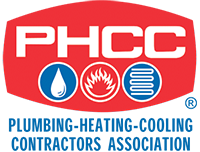DIY Plumbing & A/C Fixes
Keeping your heating, cooling and plumbing systems in good working order means your utility bills will be lower, your home will be more comfortable, and you’ll need to call for repairs less often. We recommend these DIY tips:
Change Your Filters
If you have lived in West Texas for long, you know that “dusty” is just a way of life out here. Fortunately, your home comfort system contains a filter to keep dust (and other pollutants) from circulating through the rest of your system and your home. Unfortunately, that filter needs to be changed regularly. A dirty filter can restrict airflow, make the air in your home dirtier, and cause a breakdown of your system just when you need it most.
Don’t wait for a dirty filter to leave you at the mercy of extreme temperatures with no heating or cooling – be sure to change your filters regularly or find out how to become a BTAC preferred customer and have us come change your filter for you.
Look out for Your Pipes
We don’t usually have an overabundance of long-lasting freezing temperatures on the South Plains, but it doesn’t take long with your pipes being subjected to air below 32° before the water inside them freezes, expands, and causes a crack or rupture. Once that frozen pipe thaws back out, you could have a leak on your hands ranging from a slow drip to raging flood. Even worse, this leak could be happening underground or below your slab, making it much harder to notice.
When the forecast shows freezing temperatures, take a few minutes to insulate your outdoor faucets, which can be as simple as wrapping and taping a towel around them. If you had that on your plan for tomorrow but your pipes froze today, don’t worry – we won’t tell anyone. But we will help you fix it.
Check Your System
- If you have a forced air heating system check your furnace’s blower compartment and blower coils. Vacuum them if you see dirt and dust there. You should also check fan belt tension, and lubricate fan and motor bearings.
- Don’t keep clutter near your furnace. It’s a fire hazard, and may keep your system from operating efficiently.
- To make sure you’re getting the most out of your heating system, keep the heating registers and vents throughout the house free of dust, dirt, and pet hair by vacuuming them at least once a year.
- Listen for odd sounds when your heating or cooling system kicks in. If you hear anything unusual, get in touch with your service professional so you can head off problems before they become serious.
- In winter months, set your ceiling fan at its slowest speed and reverse it in order to gently push warm air down from the ceiling without generating a breeze.
DIY Tips for Maximum Efficiency and Comfort
Whether your comfort system is old or new, in a new or old home, in an apartment or a single-family home, there are many little things you can do to optimize its efficiency and minimize your utility bills. They’re definitely worth the small amount of time and expense they take, because in the long run, they’ll save you money.
Outside
Whatever the season, you want to keep your comfortable air inside the house. That means caulking and weather stripping doors and windows, around chimneys and flues, and anywhere else inside air can escape. Be sure to check for cracked or broken shingles, crumbling grout, and worn or torn vapor barriers, too.
Inspect the exterior of your home once or twice a year. A good way to remember is to do it when you have your regular, professional HVAC check-up because heating and cooling will be on your mind anyway.
If you’re building a new home or replacing windows, invest in vinyl-or wood-clad insulated (thermopane) windows and storm windows and doors. Then keep them closed whenever the heat or air conditioning is on!
Keep vegetation and debris well away from the outdoor unit of your system. They can block air flow, which forces the system to work harder to produce the same level of comfort. You’ll spend more now…and in a few years, when the equipment fails prematurely and you have to replace it. However, use vegetation to keep your home cooler in summer and warmer in winter. For example, plant a row of trees on the side of your home the wind usually comes from. They’ll act as wind blocks. Because deciduous trees lose their leaves in the winter, they’ll let in the sun’s light and warmth in winter; in the summer, they provide cooling shade. Do, however, be careful about how close you plant anything to the house, and take into account that trees and shrubs grow. They can block light, and in some areas of the country become highways for such pests as carpenter ants. A local landscape architect, reputable garden center, or the state or county extension agency can help with plant selection and placement.
Inside
Set the thermostat at the highest comfortable level in the summer and the lowest comfortable level in the winter. A change in one degree changes energy consumption by about 4%. Humidifiers and dehumidifiers can make a huge difference in how the temperature feels.
Install a programmable thermostat. It will automatically adjust the temperature at night or when you’re not going to be home for a long period of time.
Lights are a source of indoor heat, a problem in the summer. Wherever possible, replace incandescent bulbs and fixtures with compact fluorescents. They use a lot less energy, produce less heat, and last longer. Today’s fluorescents aren’t like those of only a few years ago- you can choose a warm, yellow light similar to incandescent light. You can use them in table lamps, ceiling fixtures (including ceiling fan fixtures), torchieres, and for indoor and outdoor lighting. Some can be used with dimmer switches, too. Avoid halogen lamps. The light is clear and bright, but they create a lot of heat.
In the summer, keep drapes and blinds closed on the sunny side of the house during the day. In the winter, open them to take advantage of solar heat but close them at night to help block cold air (even if you have insulated windows).
Insulate attics, crawl spaces, basements, and walls to the R value recommended for your area. Your HVAC contractor can tell you how much you need. Don’t forget to insulate duct work in unconditioned space.
Use a gas fireplace or put glass doors on a wood-burning fireplace. (Be sure to check with the manufacturer first- some small fireboxes with zero-clearance flues cannot be outfitted with glass doors.) Keep the damper closed whenever you’re not using the fireplace.
In the summer, do household chores during the coolest part of the day if you can. Cooking, laundry, washing dishes, and heavier work such as vacuuming are examples. Check to see if your electric utility offers time-of-day pricing. That could save you even more money.
DIY Home Energy Audit
1. Find the air leaks
First, close all your windows, doors and flues and turn off your furnace and water heater. Then turn on all your exhaust fans; this will help pull air from the outside. Now, walk around your home and feel for drafts in the following areas:
- Doors and windows
- Fireplaces
- Corners, baseboards and areas where the wall and ceiling meet
- Pet doors and mail lots
- Window AC units
- Electrical outlets and plates
- Pipes
If you have trouble, try wetting your hand or use a lit incense stick and watch the trail of smoke for indications of drafts.
2. Check your insulation
In the attic you should find both insulation and a vapor barrier underneath it. If your basement is heated, there should be insulation in the walls, around pipes, the water heater and ducts. If your basement is unheated you should also find it installed underneath living areas. Of course, there should be insulation in your walls as well. To check, turn off the electricity in your home, remove an electrical outlet plate and push a stick (a chopstick works really well) into the gap- resistance indicates insulation.
3. Heating and Cooling Equipment
These energy draining systems have come a long way in terms of efficiency, size and noise levels. If your equipment is more than 15 years old, you can most likely save as much money in lower utility costs over a couple years as you spend replacing them with a new, quiet efficient system. Plus, new tax credits and incentives make replacing older units a logical choice. Regardless of age, all HVAC equipment should be serviced annually by a certified professional to maintain efficiency.
4. Think about your lights
Replacing incandescent bulbs with fluorescents and/or LEDs not only dramatically reduces the amount of energy it takes to light up your home, it also significantly reduces the amount of heat produced and creates less work for your AC system. Avoid halogen lamps which produce a great deal of heat. Install dimmer switches where they can be used and motion sensors on exterior lights.
(806) 589-1014 - Call us today!
24-Hour Plumbing, Air Conditioning & Heating Repair
With more than 50 years’ experience providing heating, ventilation and air conditioning services for residential and commercial customers, we at Bruce Thornton Air Conditioning are proud to be the South Plains TX area’s comfort specialists. We specialize in system replacement, preventive maintenance and repair, all with the goal of keeping your heating, cooling, refrigeration and plumbing systems functioning at maximum efficiency.
Why BTAC?
We are your one-stop provider.
We are always at your service.
We’re highly qualified.
We do up-front pricing.
We stand behind our work.

What Customers Love About Us

Open 24/7
24-hour Emergency Service Available

Contact Us
Bruce Thornton Air Conditioning
128 Slaton Road
Lubbock, Texas 79404
Phone
Phone: (806) 589-1014
State HVAC License: TACLA00112807C
State Plumbing License: M40449
Amana is a registered trademark of Maytag Corporation or its related companies and is used under license to Goodman Company, L.P., Houston, TX. All rights reserved.
Emergency Plumbing, A/C, & Refrigeration Repair Services in Lubbock, TX - Call Us Now!









